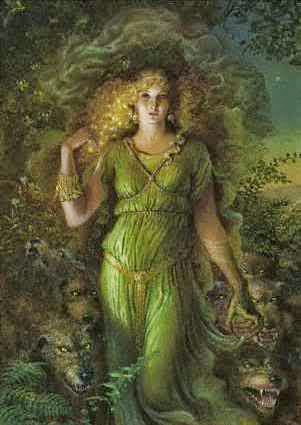(After Sir J. Simpson)
Another singular emblem, upon the meaning of which no light has yet been thrown, occurs frequently in connexion with megalithic monuments. The accompanying illustrations show examples of it. Cup-shaped hollows are made in the surface of the stone, these are often surrounded with concentric rings, and from the cup one or more radial lines are drawn to a point outside the circumference of the rings. Occasionally a system of cups are joined by these lines, but more frequently they end a little way outside the widest of the rings. These strange markings are found in Great Britain and Ireland, in Brittany, and at various places in [pg 68] India, where they are calledmahadéos. 42 I have also found a curious example—for such it appears to be—in Dupaix' “Monuments of New Spain.” It is reproduced in Lord Kingsborough's “Antiquities of Mexico,” vol. iv. On the circular top of a cylindrical stone, known as the“Triumphal Stone,” is carved a central cup, with nine concentric circles round it, and a duct or channel cut straight from the cup through all the circles to the rim. Except that the design here is richly decorated and accurately drawn, it closely resembles a typical European cup-and-ring marking. That these markings mean something, and that, wherever they are found, they mean the same thing, can hardly be doubted, but what that meaning is remains yet a puzzle to antiquarians. The guess may perhaps be hazarded that they are diagrams or plans of a megalithic sepulchre . The central hollow represents the actual burial-place. The circles are the standing stones, fosses , and ramparts which often surrounded it; and the line or duct drawn from the centre outwards represents the subterranean approach to the sepulchre . The apparent “avenue” intention of the duct is clearly brought out in the varieties given below, which I take from Simpson. As the sepulchre was also a holy place or shrine, the occurrence of a representation of it among other carvings of a sacred character is natural enough; it would seem symbolically to indicate that the place was holy ground. How far this suggestion might apply to the Mexican example I am unable to say.
Varieties of Cup-and-ring Markings

